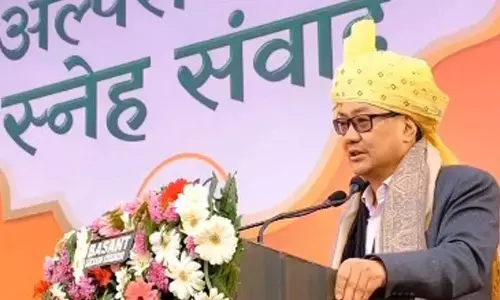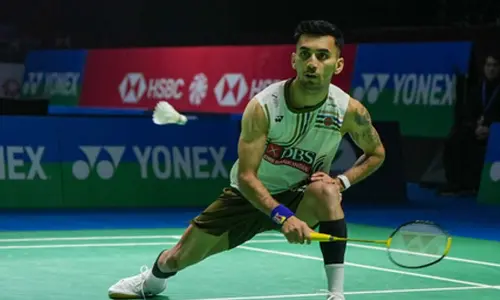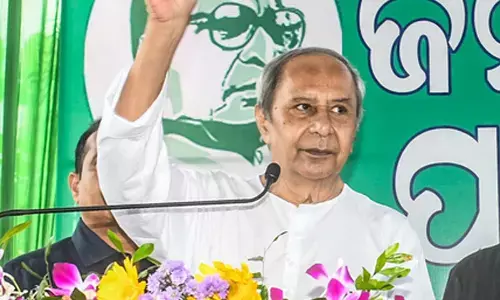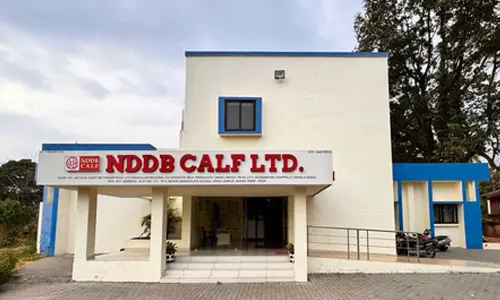9-Day Spiritual Splendour

Of all festivals that take place on Tirumala Hills throughout the year, the Brahmotsavam, a nine-day festival of Lord Venkateswara, the presiding deity of Seven Hills and the God of Kaliyuga, is the most splendid and spectacular one.
Of all festivals that take place on Tirumala Hills throughout the year, the Brahmotsavam, a nine-day festival of Lord Venkateswara, the presiding deity of Seven Hills and the God of Kaliyuga, is the most splendid and spectacular one. Though everyday is a festival day in Tirumala, the Brahmotsavam assumes greater significance, having its own grandeur and uniqueness. Mythology says that Sri Mahavishnu has manifested Himself as Sri Venkateswara in the month of Kanya and the star Sravana, and therefore, the Brahmotsavam is celebrated for nine auspicious days signifying Lord’s manifestation on this earth plant.

Bhavishyottarapurana mentions that since Brahma, the creator himself, is supposed to have started this festival in honour of Lord Venkateswara, the festival is named after him. Historical evidences too mention that several kings, who were inspired by the Lord, celebrated this Brahmotsavam with utmost devotion. There are nearly 85 inscriptions which are available, glorifying its importance. One takes us back to the period of 614 AD, when the Pallava Queen ‘Samavai’ or ‘Kaduvan Perundevi’ presented the Silver Idol of Naralapperumal and established the practice of taking it out in procession as Utsavamoorthy during the Brahmotsavam.
The inscriptions mention that the festival was celebrated with great pomp and splendor in 1328 in the month of Ashada by Thiru Venkata Yadava Raya, in 1446 by Hari Hara Raya, in 1524 AD in the month of Chaitra by Telugu Pallava King Vijayaganda Gopala Deva. Many rulers of South India belonging to Pallava , Chola, Pandya and Vijayanagara, who administrated the temple, performed this Brahmotsavam, offering huge kanukas/jewellery etc. Subsequently, the festival established by Chaturmuka Brahma is being organised successively by Tirumala Tirupati Devesthanams in a grand scale once in a year.
On the day before the commencement of Brahmotsavam “Ankurarpana” ceremony takes place as a mark of its beginning in the presence of Vishvaksena, the Chief Commander of the Lord. On the next day, Garuda Flag is hoisted on the Golden Dwajasthambha, inviting the residents of all cosmic worlds. After this, Lord Malayappaswamy with His Consorts Sridevi and Bhudevi are taken in a procession that night on Pedda Sesha Vahanam through the four mada streets. On the subsequent days, Lord Malayappaswamy is taken on different well-decorated Vahanams like Chinna Sesha, Hamsa (swan), Simha (lion), Muthyapu Pandiri (a pavilion decorated with strings of pearls), Kalpa Vriksha (wish-fulfilling tree), Sarva Bhupala , Mohini Avatara (Lord in female garb), Garuda, Hanumantha, Gaja (elephant), Surya Prabha, Chandra Prabha, Aswa (horse) Vahanams, followed by usual poojas within the temple enclosure. The mega car festival (Rathotsavam) marks the climax of Brahmotsavam.
Garudotsavam
On this day, the Chief Minister, on behalf of the Government of AP, offers silk clothes to Lord Venkateswara. The garlands worn by Goda Devi of Srivilliputtur and huge umbrellas by a private charitable trust from Chennai are brought to Tirumala to be offered to the Lord as part of a tradition. On this sacred day, rare jewels like Lakshmi Hara, Makara Kantika and Sahasranama Hara of the main deity (Moola Virat) will be adorned on Malayappaswamy, the processional deity. Lakhs of piligrims gather at Tirumala to have darshan of the Lord on the Garuda Vahana, a soul-stirring event, in the night. How the devotee feels at this spectacular sight is beyond one’s narration and description which should be seen to be experienced.
The nine-day festival ends with the ceremonial bath of Sudarsana Chakra in the holy water of Swamy Pushkarini adjacent to the temple. Many puranas say that a holy dip in the Pushkarini on this day is one of the most sacred rituals and absolves devotees of all sins and confers supreme bliss on them. In the evening, the Garuda Flag is brought down from the Dhwajasthamba marking the end of the Brahmotsavam.
Rathotsavam
The Rathotsavam (car festival), conducted after Garudotsavam, marks the culmination of Brahmothsavam. On the eighth day, in the early morning, Lord Malayappa Swamy along with His two consorts is seated on a silver swing arranged in a big wooden chariot, richly decorated with innumerable fragrant flowers. Thousands of devotees vie to drag the chariot with great enthusiasm and ecstasy.
Scriptures say that Ratham (chariot) is a divine symbol. Its four wheels symbolise the four–fold values – dharma, jnana, wealth and love; four horses symbolise the four Vedas– Rig, Yazur, Sama and Adharva; the swing has Adi Sesha inside and Garutmantha on its tower. Devotees strongly believe that the Supreme Lord who administers the whole universe seated in the chariot blesses His devotees in a pleasing mood and grants their boons. It is also said in the Puranas that devotees who witness and participate in this car festival will not have re-birth – “Rathasthavam Kesavam Dhrushtya Punarjanma Na Vidyathe”
The Brahmotsavam festival celebrated on a magnificent scale draws huge crowds of devotees from every nook and corner of the country and those who witness this mega festival get blessed by the Lord. For them, there can be no greater boon than this.














